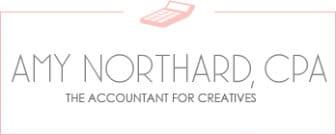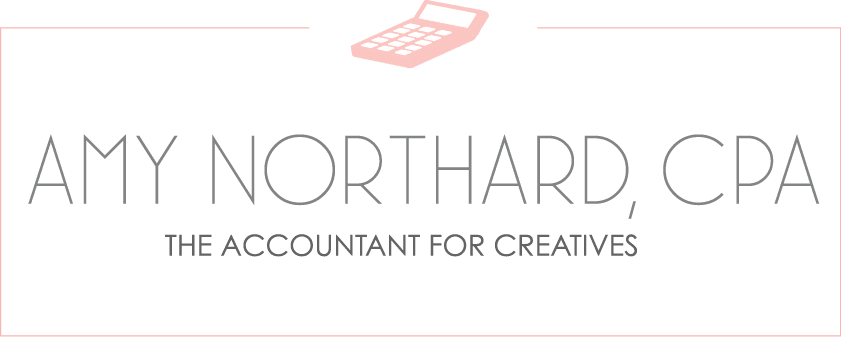My passion is teaching small business owners to understand their taxes while also helping them maximize their profits by reducing their tax burdens.
In today’s post, I hope to do both of those things by explaining the magic QBI 28.57% W-2 formula. I know that sounds overwhelmingly boring, but stick with me for a minute, and I’ll make it make sense.
What is QBI?
So first off, let me explain QBI. Within the Tax Cuts and Job Act passed in 2017, Section 199A enacted a 20% tax deduction on qualified business income (QBI) that applies to many pass-through businesses such as S-Corporations, limited liability companies, partnerships, and sole proprietorships.
According to the IRS, QBI is the “net amount of qualified items of income, gain, deduction and loss from any qualified trade or business.” In other words, what you likely refer to as your net profit is your QBI and can be used towards the deduction if you qualify. That can be huge!
Of course, there are certain pieces of income that do not qualify as QBI:
- Interest income
- Capital gains
- Dividends
- Some W-2 wages or payments made to a partner or shareholder
- Reasonable compensation from an S-Corporation
- Income from outside of the U.S.
If you have a qualifying business, you can take the QBI deduction for whichever of these is less:
- 20% of QBI + 20% of qualified real estate investment trust dividends and publicly traded partnership income
- 20% of taxable income – net capital gain
Can I use the QBI deduction?
I wish I could just say “of course!” to answer this question, but as with most things related to taxes, there are some qualifications and rules that make this answer pretty tricky. I’ll break it down as much as I can, but it’s always best to talk to a CPA if you have questions.
Basically, there are 2 main factors that determine whether or not you can take the QBI deduction: income and type of business.
For the tax year 2022, your QBI deduction begins to phase out if your business income exceeds the threshold amount of $340,100 (for joint filers) or $170,050 (for single filers). If you own a specified service trade or business (SSTB), for the tax year 2022, you cannot take the QBI deduction if your business income exceeds the threshold amount of $440,100 (for joint filers) or $220,050 (for single filers). Keep in mind that these threshold amounts for the QBI deduction will be adjusted a little every year for inflation.
What’s a specified service trade or business (SSTB)?
If your taxable income exceeds the upper QBI deduction threshold amount and your business is an SSTB, then you cannot take the QBI deduction. So what does that mean?
The following are the fields the government has identified as being an SSTB:
- Health
- Law
- Accounting
- Actuarial science
- Performing arts
- Consulting
- Athletics
- Financial services
- Investing and investment management
- Trading
- Dealing in certain assets
- Any trade or business where the principal asset is the reputation or skill of one or more of its employees or owners
If you’re not sure if you own an SSTB, check with your accountant or financial professional.
What is the magic QBI 28.57% W-2 formula?
It’s not very often (or ever!) I get to use the word “magic” when talking about taxes, but today is that day! If you’re an S-Corporation owner, the magic QBI 28.57% formula is an equation you can use to determine a salary number for yourself that will maximize your QBI deduction.
At the risk of completely demystifying the one magical thing I’ve got going in this post, the way that we get the 28.57% is by simply dividing 2 by 7. This percentage or ratio signifies the perfect balance between W-2 wages and business income that you should try to achieve in order to get the most out of your QBI deduction. To use the formula, you’ll take the percentage and multiply it by your business income to land on a good salary number.
This magic formula could help all S-Corporation owners using the QBI deduction, but it is especially helpful if you’re an SSTB whose income falls between the income threshold amounts. In other words, if you make a lot of money in the eyes of the IRS, then this magic could work for you.
When you’re within the threshold range, your QBI deduction is phased out, but you can still use either 20% of your income or 50% of your wages (whichever is less) to determine your QBI deduction. Also, if you’re over the upper threshold and facing not being able to use the QBI deduction at all, using the magic formula could help you get under the upper threshold and claim the deduction.
Let me give you an example of the magic QBI formula in action. My client, Lori, is an S-Corp owner and consultant, which means her business is an SSTB. She is the sole owner and employee. Lori’s business brought in $450,000 last year, which put her above the upper threshold for the QBI deduction, so unfortunately, she couldn’t use it.
Previously her reasonable compensation or salary was $60,000; however, after applying the magic QBI 28.57% formula, we determined that we should increase Lori’s salary for the following year in order to use and maximize her QBI deduction by applying it to 50% of the wages paid by her business. Here are the calculations:
| Now | With Magic Formula | |
|---|---|---|
| Taxable Business Income | $450,000 | $450,000 |
| Reasonable Salary (Wages) | $60,000 | $128,571 |
| Net Taxable Business Income | $390,000 | $321,429 |
| QBI Deduction (50% Wages) | $0 | $64,285.50 |
| Possible Tax Savings from QBI Deduction | $0 | $23,785.64 |
Now what would happen if Lori was an artisan rather than a consultant? This means her S-Corporation would not be classified as an SSTB and would qualify for the 20% QBI deduction. Here’s how that would shake out:
| Now | With Magic 28.57% Formula | |
|---|---|---|
| Taxable Business Income | $450,000 | $450,000 |
| Reasonable Salary (Wages) | $60,000 | $128,571 |
| Net Taxable Business Income | $390,000 | $321,429 |
| QBI Deduction (50% Wages) | $78,000 | $64,285.80 |
| Possible Tax Savings from QBI Deduction | $28,860 | $23,785.45 |
As you can see from these examples, the magic formula shouldn’t be broadly applied to every situation. It’s important to understand that even though this is called a “magic” formula, it doesn’t completely negate many other factors that should go into considering wages for yourself and any other employees you may have. Remember that wages are subject to employment taxes and raising the amount you pay in wages could negate some of the amount you save with the magic QBI formula. It’s best to speak to a CPA if you’re not sure what to do.
Will the magic QBI 28.57% formula work for your business? Might as well run the numbers and find out. It could mean big tax savings!

